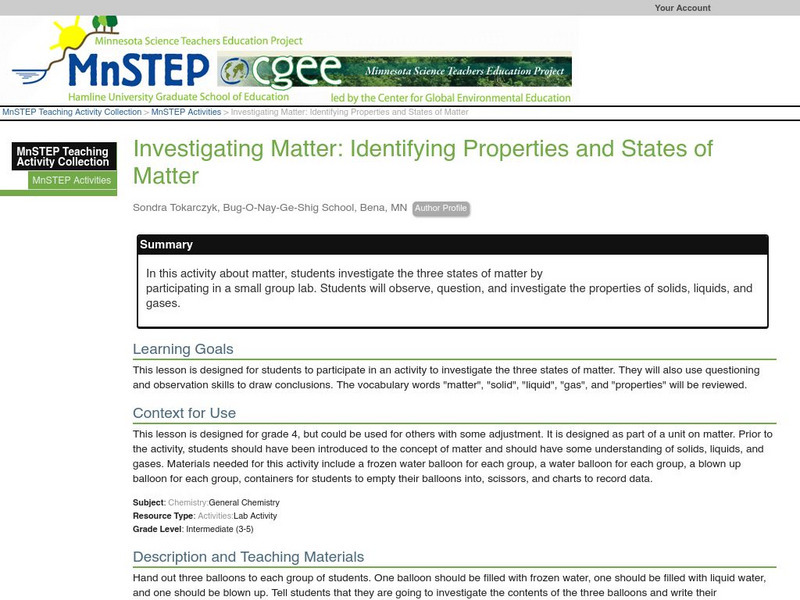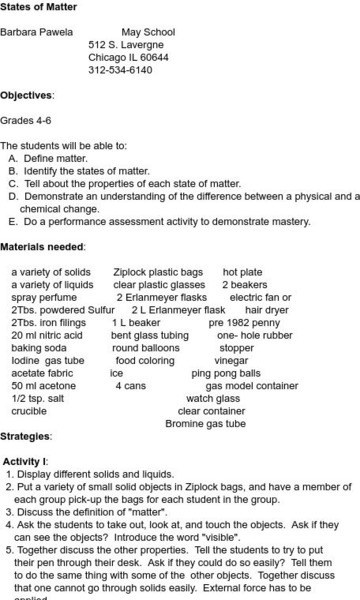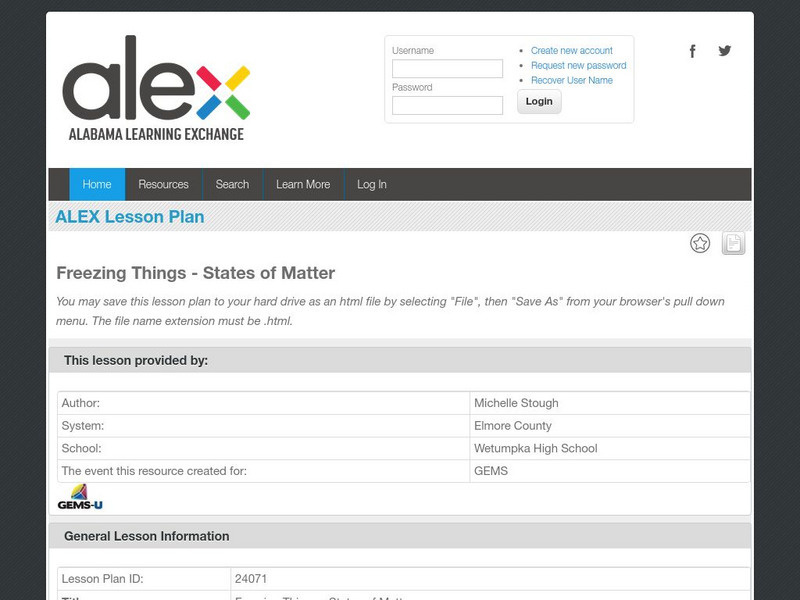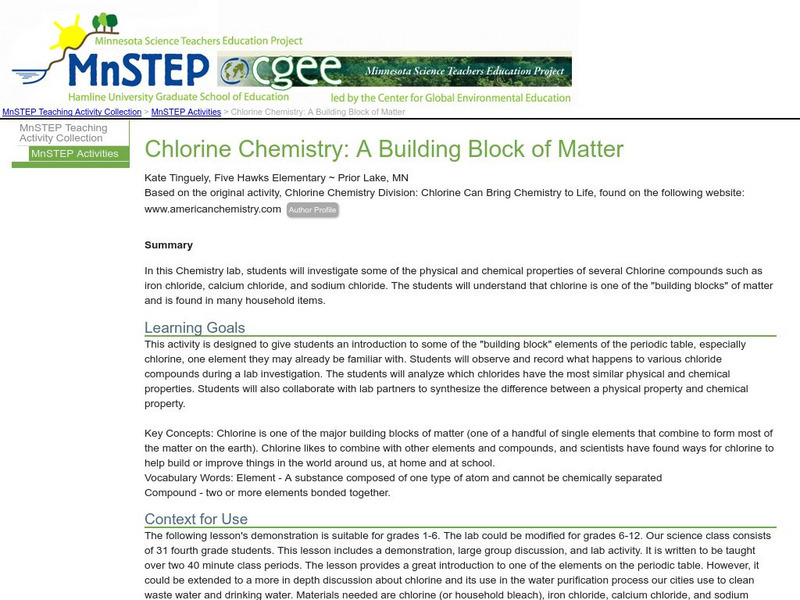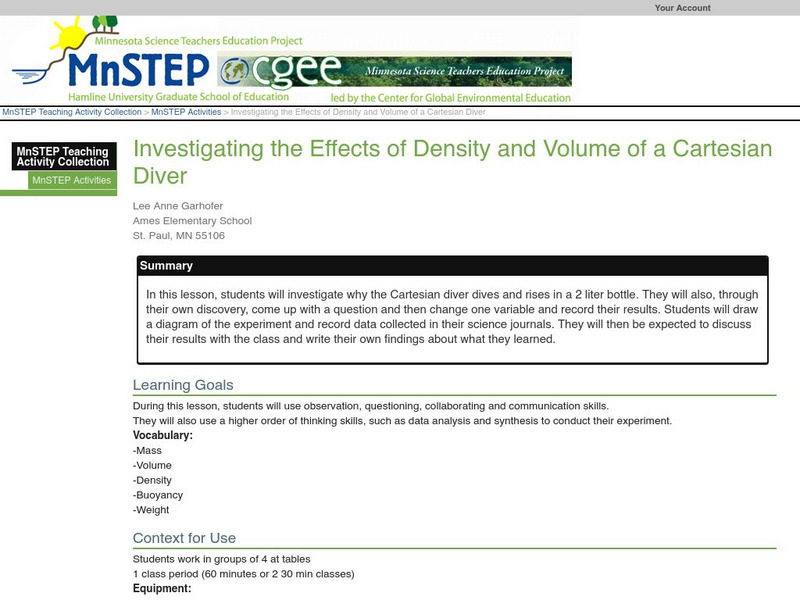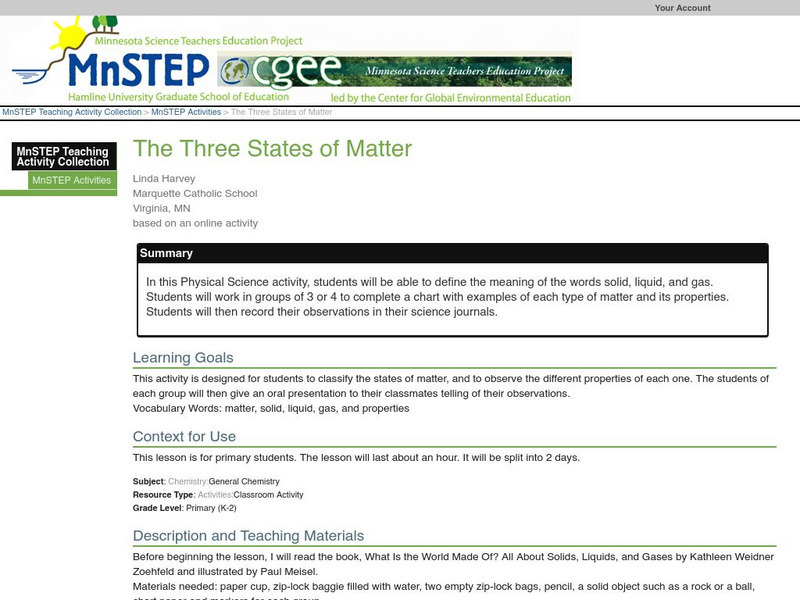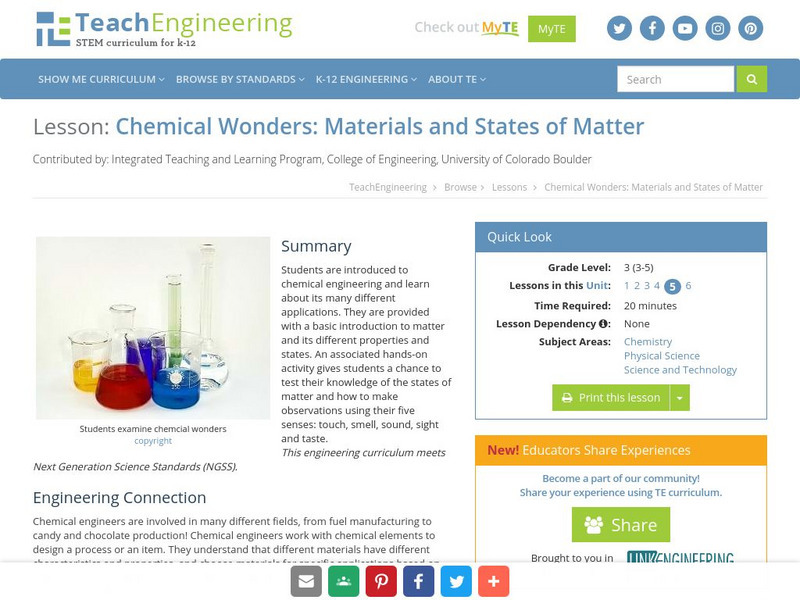Hi, what do you want to do?
CPALMS
Cpalms: Observable Properties of Matter
[Free Registration/Login Required] Young scholars will sort objects according to their observable properties, such as size, shape, color, temperature (hot or cold), weight (heavy or light) and texture. Included are printable resources, a...
University of Texas at Austin
The University of Texas Mc Donald Observatory: Properties of Dust
Middle schoolers carry out a scientific investigation of dust in their classroom, then extend their experience to properties of dust in space.
Utah Education Network
Uen: Matter, It Does!
In this activity students identify forms and changes of matter.
Science Education Resource Center at Carleton College
Serc: Investigating Matter: Identifying Properties and States of Matter
In this activity about matter, students investigate the three states of matter by participating in a small group lab. Students will observe, question, and investigate the properties of solids, liquids, and gases.
NASA
Nasa: Light but Strong
Use these lessons from NASA to teach multiple Next Generation Science Standards for grades K-5. Properties of matter and engineering design are the focus of these lessons. Detailed plans and student handouts are included. [PDF]
Better Lesson
Better Lesson: Changing Matter:changing Matter: Is Weight the Same or Different?
Young scholars conduct a hands-on investigation to determine how matter, changing state, effects the property of weight. Students will collect data and graph their results. Resources include step by step instructions, a data worksheet,...
Alabama Learning Exchange
Alex: What's the Matter: Concentration Game
What's the Matter? is a guided inquiry instructional activity on classification of matter, physical and chemical properties, and physical and chemical changes. There are two parts to this instructional activity: (a) concentration game...
Science and Mathematics Initiative for Learning Enhancement (SMILE)
Smile: States of Matter
A comprehensive lesson plan site that contains a number of activities to aid in teaching about the states and properties of matter and the difference between a physical and chemical change.
Alabama Learning Exchange
Alex: Freezing Things: States of Matter
The class will go back over the Power Point presentation on chemical and physical properties. The teacher will then conduct numerous liquid nitrogen demos. This lesson is used early in the Chemistry course. The students love it. This...
Alabama Learning Exchange
Alex: Matter
During this lesson, young scholars explore matter through a hands-on investigation. By participating in an experiment and navigating the Internet, students learn to identify the properties of matter.
Science Education Resource Center at Carleton College
Serc: Chlorine Chemistry: A Building Block of Matter
Students investigate physical and chemical properties of several chlorine compounds such as iron chloride, calcium chloride, and sodium chloride. The students will then discover that chlorine is one of the building blocks of matter and...
Science Education Resource Center at Carleton College
Serc: Investigating the Effects of Density and Volume of a Cartesian Diver
For this lesson, students will investigate why the Cartesian diver dives and rises in a 2 liter bottle. They will also, through their own discovery, come up with a question and then change one variable and record their results. Students...
Science Education Resource Center at Carleton College
Serc: The Three States of Matter
For this Physical Science exploration activity, students explore the meaning of the words solid, liquid, and gas. Student groups complete a chart with examples of each type of matter and its properties and then record their observations...
American Chemical Society
Middle School Chemistry: Molecules Matter
Students observe and discuss water on the molecular level using the idea that water is composed of tiny molecules that are attracted to one another.
TeachEngineering
Teach Engineering: Chemical Wonders
Learners are introduced to chemical engineering and learn about its many different applications. They are provided with a basic introduction to matter and its different properties and states. An associated hands-on activity gives...
Other popular searches
- Physical Properties of Matter
- Properties of Matter Song
- Useful Properties of Matter
- Science Properties of Matter
- Properties of Matter Booklet
- Properties of Matter Lecture
- Compare Properties of Matter
- Chemical Properties of Matter
- Social Properties of Matter
- Properties of Matter Test
- The Properties of Matter
- Properties of Matter Worksheet







